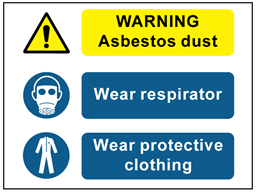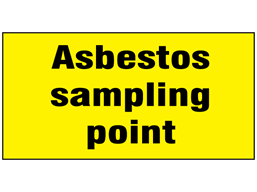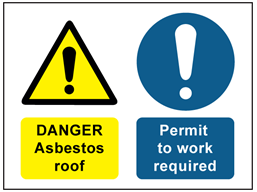
During the mid 1970 – early 1980s the use of blue and brown asbestos was banned herein the UK, while the ban of using white asbestos happened much later in 1999. This means that there is an extremely high chance that buildings constructed before 2000 will contain asbestos, somewhere. This means that even today, 16 years after the ban, people, especially construction workers are at risk of exposure to this deadly material.
Before you start working on any building built or refurbished before the year 2000, you will need to ensure that there is no asbestos present. Before starting any work – of any kind you need to do the following:

Identify if asbestos is present.
The first step is to identify whether there is any asbestos present in the building. the people who are responsible for the maintenance of the building should have a detailed report about any areas of the building that contains asbestos, and what condition it is in. Failing this you can get the building professionally surveyed. By getting the samples of the material that you are going to be working on analysed, will not only tell you if they contain asbestos, but it will also inform you of what type of asbestos is present. If you can’t get the samples analysed, then it is advised that you approach the work materials that you will be working with, with extreme caution and implement the appropriate precautions to safeguard yourself against any possible asbestos exposure.
Identify the type of asbestos, and its condition
It is important to understand what type of asbestos you are dealing with. The different types of asbestos all have different uses, for instance, Tremolite asbestos (brown) has heat resistant properties and was spun and woven into cloth, whereas Actinolite asbestos was often used as a light-weight insulation material. Knowing the type of asbestos present, makes it easier to identify where it is being used and how to remove it.
Carry out a risk assessment
Carrying out a detailed risk assessment is crucial when you are planning dangerous work. Working with asbestos is no exception. When conducting your risk assessment, you need to clarify if it is possible to carry out the work that you are tasked with, without disturbing the asbestos.
If it impossible to carry out the work without disturbing the asbestos, you have to identify the people who will be at the most risk of exposure and implement the correct precautions to ensure their safety while to work is being carried out.

Hire Professionsals to Remove the Asbestos
If you find that the building you are working on has asbestos, you will need to call in a specialist asbestos remover. These people are fully trained to the risks of asbestos exposure, and are experts at protecting themselves and other around them. Asbestos removal will need to be carried out by a contractor, who holds a license from the HSE.
If you are managing a building which contains asbestos, it is vital that you clearly label the areas where the asbestos is found in the building. It is customary that you do this by implementing warning signs. If you have recently discovered asbestos, or need to replace your current asbestos warning signs in your workplace simply click here to view our truly comprehensive range of asbestos warning signs.
We pride ourselves in providing a truely comprehensive range of warning signs and safety labels, however in the unlikely circumstance you can not find the sign you are looking for you can call us on 0800 3761 693 or email us at info@labelsource.co.uk and we will be more than happy to assist you.